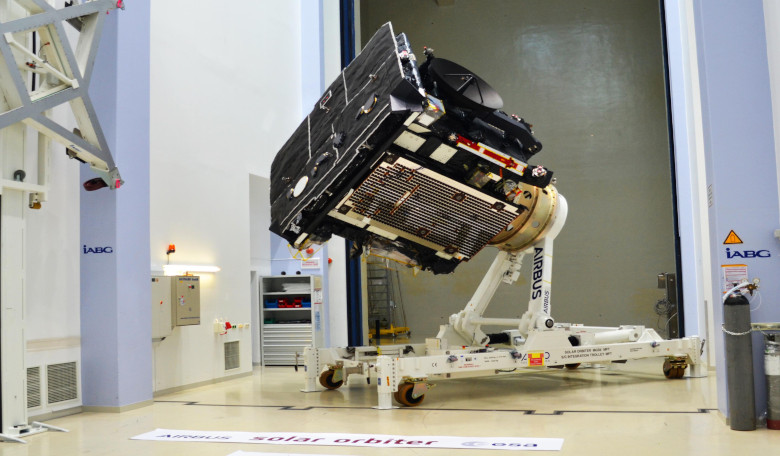ESA's Solar Orbiter pictured at IABG in Ottobrunn, Germany, this week before starting its journey to Cape Canaveral in Florida, USA, in preparations for launch.
Solar Orbiter will perform a close-up study of our Sun and the Sun-Earth connection to better understand the behaviour of the star on which all life on Earth depends.
At its closest point, the spacecraft will operate from within the orbit of Mercury, providing unique data and imagery of the Sun.
Solar Orbiter is an ESA-led mission with NASA participation and will be launched from Cape Canaveral in February 2020.
During the initial cruise phase, which lasts until November 2021, Solar Orbiter will perform two gravity-assist manoeuvres around Venus and one around Earth to alter the spacecraft's trajectory, guiding it towards the innermost regions of the Solar System.
At the same time, Solar Orbiter will acquire in situ data and characterise and calibrate its remote-sensing instruments. The first close solar pass will take place in 2022 at around a third of Earth's distance from the Sun.
The spacecraft's orbit has been chosen to be 'in resonance' with Venus, which means that it will return to the planet's vicinity every few orbits and can again use the planet's gravity to alter or tilt its orbit. Initially Solar Orbiter will be confined to the same plane as the planets, but each encounter of Venus will increase its orbital inclination.











